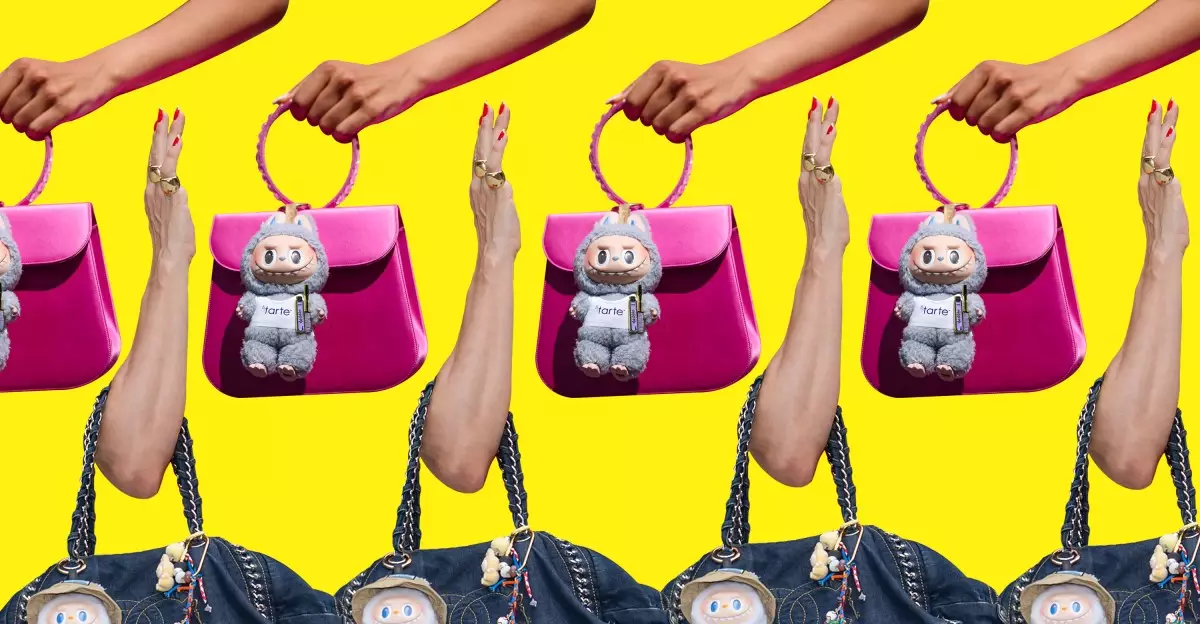In the contemporary world of collectibles, winning isn’t simply about ownership; it’s about conquering a meticulously crafted digital maze that can leave even the most patient and tech-savvy consumer frustrated. The case of Labubu—a tiny figurine that has ignited fervor among collectors—illustrates a broader phenomenon: the juxtaposition of desire and despair driven by the artificial barriers set by creators and platforms. What begins as a straightforward purchase swiftly devolves into a game of persistence, timing, and at times, outright luck. Instead of an instant gratification, buyers are met with an intricate, often maddening process designed to test their resolve. This paradigm has evolved into a spectacle that relies heavily on the psychology of gamification, drawing consumers into a mini-adventure that blurs the lines between a transaction and a contest.
The Manufactured Challenge: More Than Just Price
Unlike typical consumer goods, the allure of Labubu does not stem from its price point of $27.99 but from the arduous journey to procure it. Pop Mart, the Chinese toy company behind the mystique, has undeniably turned the act of buying into a high-stakes ordeal reminiscent of Black Friday chaos or lottery draws. The seemingly simple act of clicking “buy” is complicated by queue systems, limited stock displays, and timers that reset with each failed attempt. Such mechanics evoke a sense of unpredictability, where success hinges on swift reflexes, patience, and strategic timing. The process underscores a fundamental truth: modern collectibles are less about the object itself and more about the experience—an experience that’s designed to be addictive, engaging, and frustratingly elusive.
The Psychology of the Collector and the Role of Social Media
Social media amplifies the chaos, transforming individual frustrations into collective entertainment and community bonding. Influencers and dedicated collectors create content that glorifies the hunt, turning each failed attempt into a shared narrative of perseverance. TikTok live streams and YouTube tutorials offer tips, hacks, and humor, reinforcing a collective identity rooted in tension, obsession, and hope. For many, engaging with these platforms is as vital as the act of purchasing itself. The thrill of the chase becomes a social event, a form of virtual participation where victory is often celebrated not solely for owning the toy but for overcoming the system that stands before it. Yet, hidden within this is a critique of consumer culture: the hype is manufactured, and the sense of accomplishment is often a curated illusion.
The Deepening Bond: The Ritualistic Nature of Uncertainty
What makes the Labubu phenomenon particularly compelling is how it mirrors gambling’s adrenaline rush. The randomness of the unboxing, combined with the curated scarcity of rare colors, elevates the toy collection beyond mere aesthetics. The joy derives from the uncertainty—the uncertainty of what’s inside the box, whether luck will favor you, and how much effort you’re willing to invest for the chance. The metaphor extends beyond mere collectibles; it taps into a universal human desire for unpredictability, risk, and the hope of exclusive reward. For devoted enthusiasts, each attempt becomes a ritual, a test of patience and resilience, heightening the emotional stakes regardless of the actual monetary value.
The Economics of Obsession and the Illusion of Value
The secondary market and online forums reveal a nuanced understanding of Labubu as a commodity subject to market psychology. While flipping these toys might seem lucrative for a few, most enthusiasts acknowledge the financial futility in doing so unless they hit rare variants—or hold unopened, pristine boxes. The existence of counterfeit options (“Lafufus”) only muddies the waters, diluting authenticity and further commodifying the obsession. The true, often unspoken value lies in the experience—the shots of elation when you finally secure a box, the shared community’s camaraderie, and the addictive cycle of challenge and conquest. The phenomenon underscores how modern-day collectibles serve as a mirror to our societal obsession with status, rarity, and the thrill of arbitrary success.
The Future of Frustration and Fulfillment in Collectibles
As long as platforms continue to harness the appeal of scarcity, unpredictability, and social validation, the Labubu archetype will persist. The hype is driven by algorithms, viral videos, and the collective yearning for exclusivity—all making the hunt more urgent and intoxicating. Yet, it raises poignant questions: when will this cycle exhaust itself? Will the frustration transform into fatigue and disillusionment? Or will platforms adapt to offer a less torturous path, shifting the focus from luck to more equitable buying experiences? For now, the thrill remains rooted in the chaos, with each new drop fanning the flames of obsession. And as my own Labubu toy prepares to ship in September, I am keenly aware that in this modern age, victory often comes not from winning, but from surviving the game.


Leave a Reply